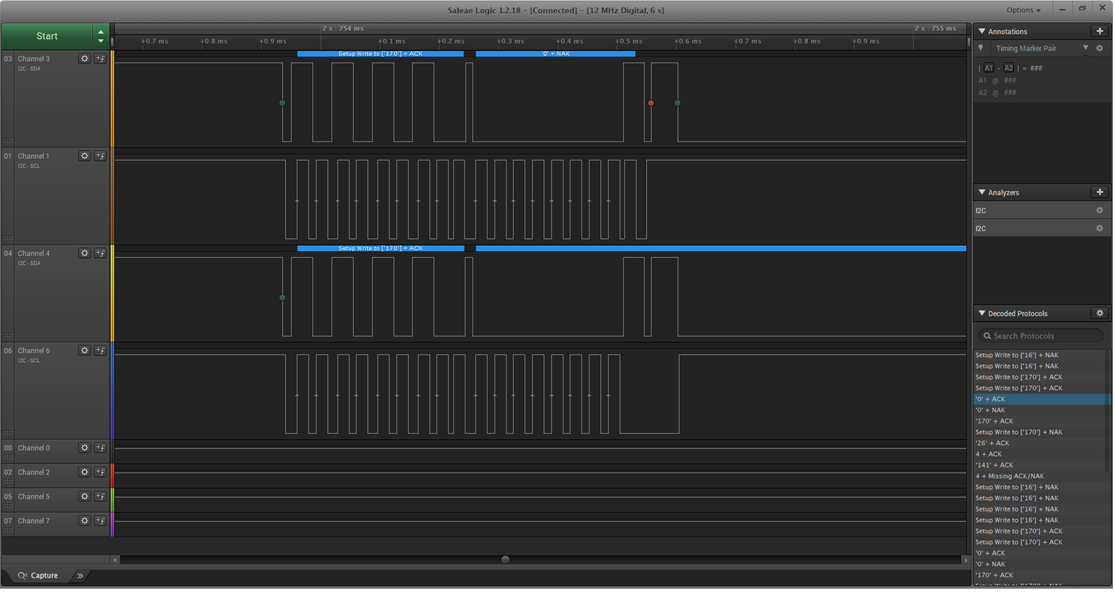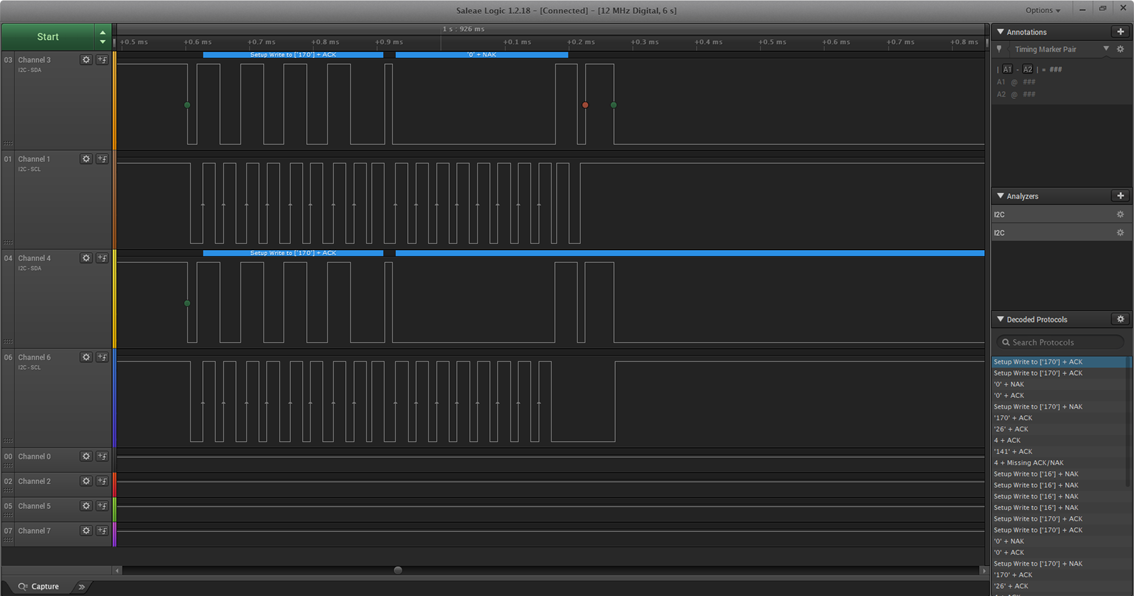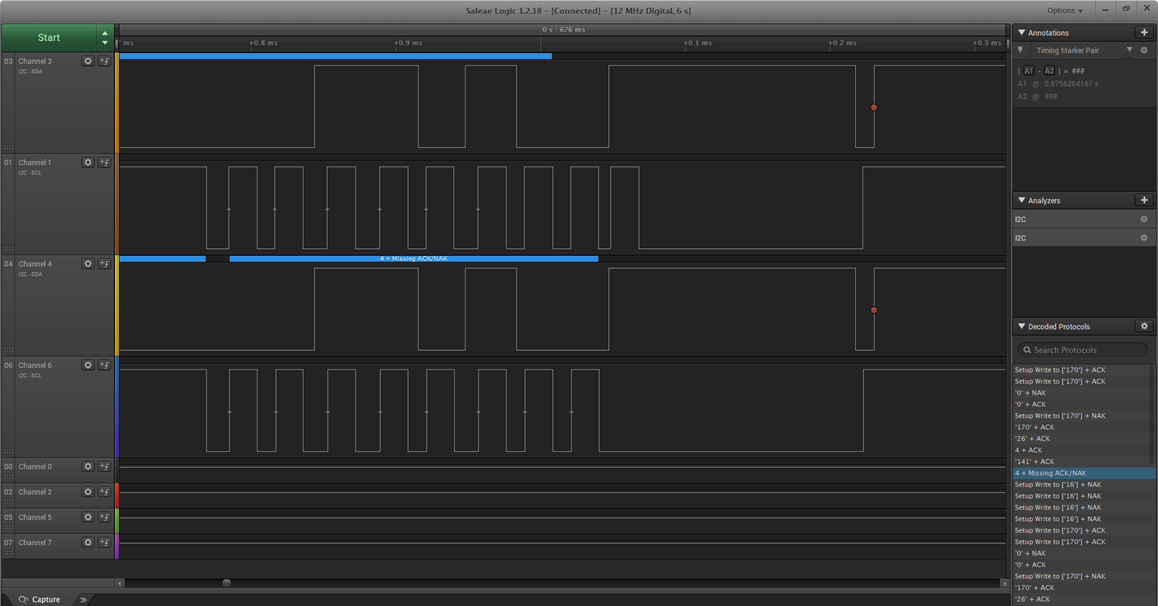Other Parts Discussed in Thread: BQ34Z100-G1, , BQ34Z100, ISO1540, TCA9517A, TCA9800
Hi
I am trying to isolate EVM2300 from custom board developed based on BQ34Z100-G1. I want to log charging and discharging as isolated.
I have used ISO1541. Side1 is connected to EVM2300 and Side2 is BQ34Z100. VCC is 3V3 for both sides. Pull-ups are 1.5k and also 0.1uF decoupling capacitors used.
But I could not get any response from chip. I could get if I driectly connect EVM2300 to chip.
I am not sure ISO1541 is correct selection or should I change that with ISO1540?
Thanks





